
Whether served shredded in tacos or sliced with a thin drizzle of chutney, pork roast is a versatile cut of meat that you can cook in a variety of ways. Boiling the roast whole is not typically a method of cooking. But a similar method called braising involves simmering the meat in liquid, which steams the pork but does not detract from its texture. Fill the cooking vessel with liquid between a quarter to halfway up the side of the roast before simmering. Several factors determine how long to simmer a pork roast, including the internal temperature and the desired texture of the final roast.
Safe Handling
Rinse the roast in cold running water before placing it in the pot. Always ensure that your hands and anything that the pork touches are clean. Only use pork that has been refrigerated below 40 degrees Fahrenheit in a refrigerator, or frozen below 0 degrees Fahrenheit. Always use before the best-before date written on the package, and never leave pork at room temperature for more than 30 minutes, as this can encourage the growth of bacteria.
Internal Temperature
You may simmer either fresh or frozen pork roast, but each requires differing amounts of cooking time to reach the correct internal cooking temperature. This temperature ensures that all harmful bacteria within the meat has been killed. For a medium-rare pork roast, boil it until the internal temperature reaches 145 degrees Fahrenheit on a meat thermometer inserted into the middle of the thickest part. For well-done, simmer it until the pork reaches 160 degrees Fahrenheit. When you are cooking a bone-in roast, make sure the thermometer does not touch the bone as this can throw off the reading.
Texture
Cook the meat for no longer than 2 to 2 1/2 hours for a tender roast that will be sliced and served. Although the meat is simmering in liquid, it will be tough if cooked for too long. Flip it over several times during the cooking process to ensure that all sides of the meat is immersed for equal amounts of time. The best way to tell when the pork is done is not after a specific amount of time has passed, but rather when the meat is tender. For meat that is falling apart, similar to pulled pork, simmer for four to six hours in a covered pot. If using this method, keep an eye on the meat to ensure that it does not stick to the bottom of the pan, and add more liquid if necessary. Quickly sear the meat on a grill or in a pan before serving to add extra flavor.
Considerations
Shorten the cooking time by cutting the roast into smaller pieces. This allows the heat to penetrate each piece, rather than having to travel through the entire roast. Alternatively, simmer the roast for most of the cooking time, but when it is just short of being cooked through, put it in an oven set to 400 degrees Fahrenheit and coat it with a light layer of oil or butter to add a golden brown finish and a light caramel flavor. Brown the meat for 10 to 15 minutes. For additional flavor during boiling, simmer the pork in a variety of liquids, such as broth or wine, or add vegetables, fruits, spices and herbs to the liquid.
Related Articles

How to Cook a Large Amount of Corned ...
How Do I Reheat Leftover Boiled Lobster?
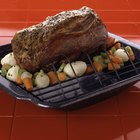
How Long Does a Pot Roast Last After It ...
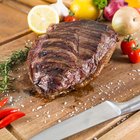
How to Cook 30 Pounds of Pork in a ...

What Are the Temperatures for Slowly ...

How to Marinate a Top Round Roast
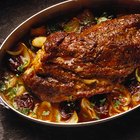
How to Use a Roaster for Pork

How to Make a Juicy Pork Tenderloin
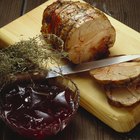
How to Know When Pork Roast Goes Bad
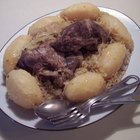
How to Cook a Boneless Sirloin Pork ...

How to Cook Beef Top Round Pot Roast
How to Slow Cook a Pot Roast With Beef ...

How Long Does It Take for Pork to Spoil ...
How to Boil Pork Jowl Bacon

How Long to Cook a Rump Roast for It to ...

How to Store Leftover Roast Pork
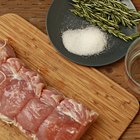
How to Brine Pork Roast

How to Do Corned Pork
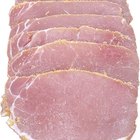
How Do I Tell If Pork Has Turned Bad?

What Are the Temperatures for Slowly ...
References
Writer Bio
Based in Kingston, Canada, Samantha Lowe has been writing for publication since 2006. She has written articles for the "Mars' Hill" newspaper and copy for various design projects. Her design and copy for the "Mars' Hill" won the Associated Collegiate Press Pacemaker award in 2008. Lowe holds an Honors BA from Trinity Western University, and a MSc in Occupational Therapy from Queen's University where she is currently doing her PhD.
Photo Credits
Jupiterimages/Photos.com/Getty Images